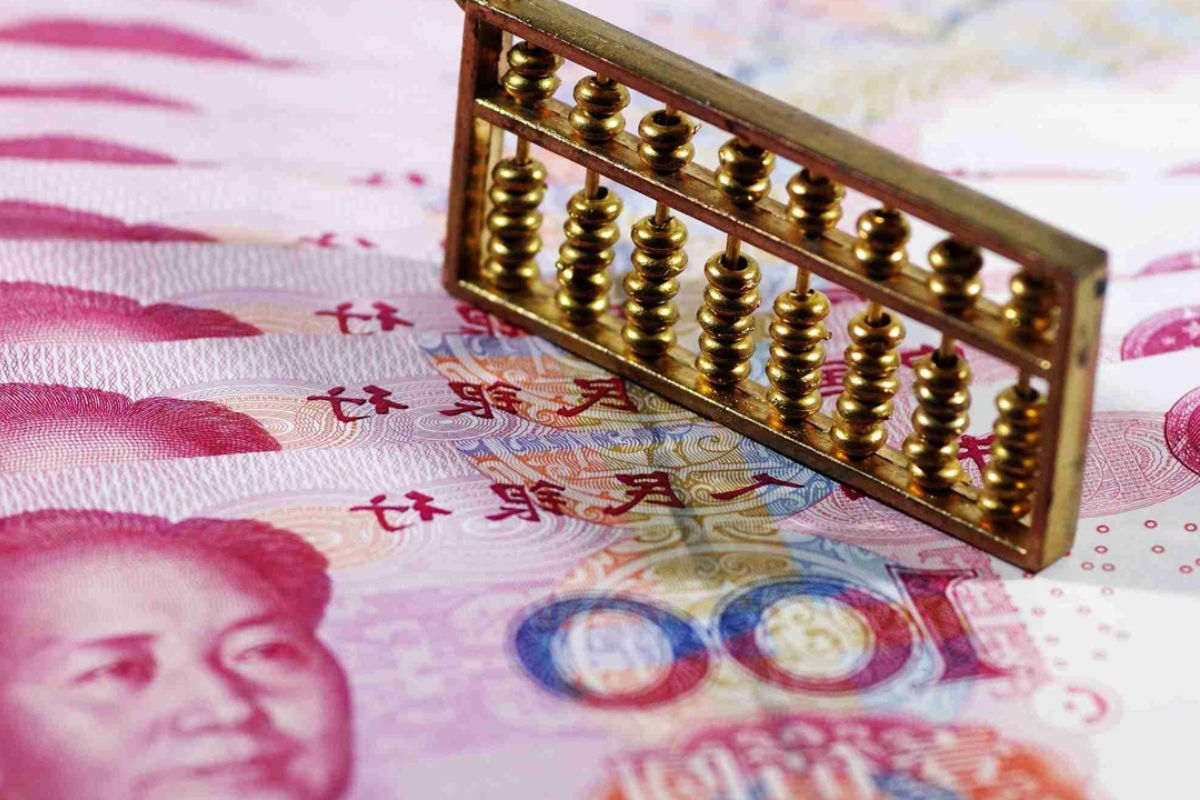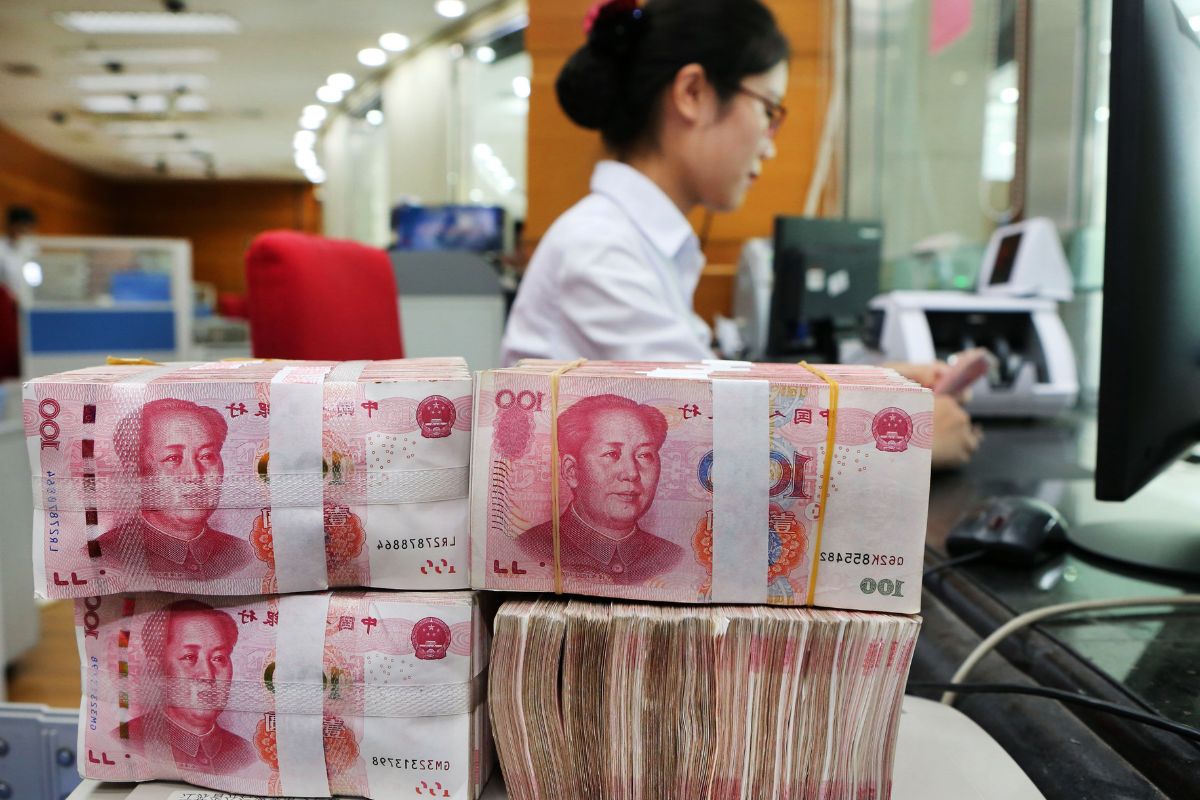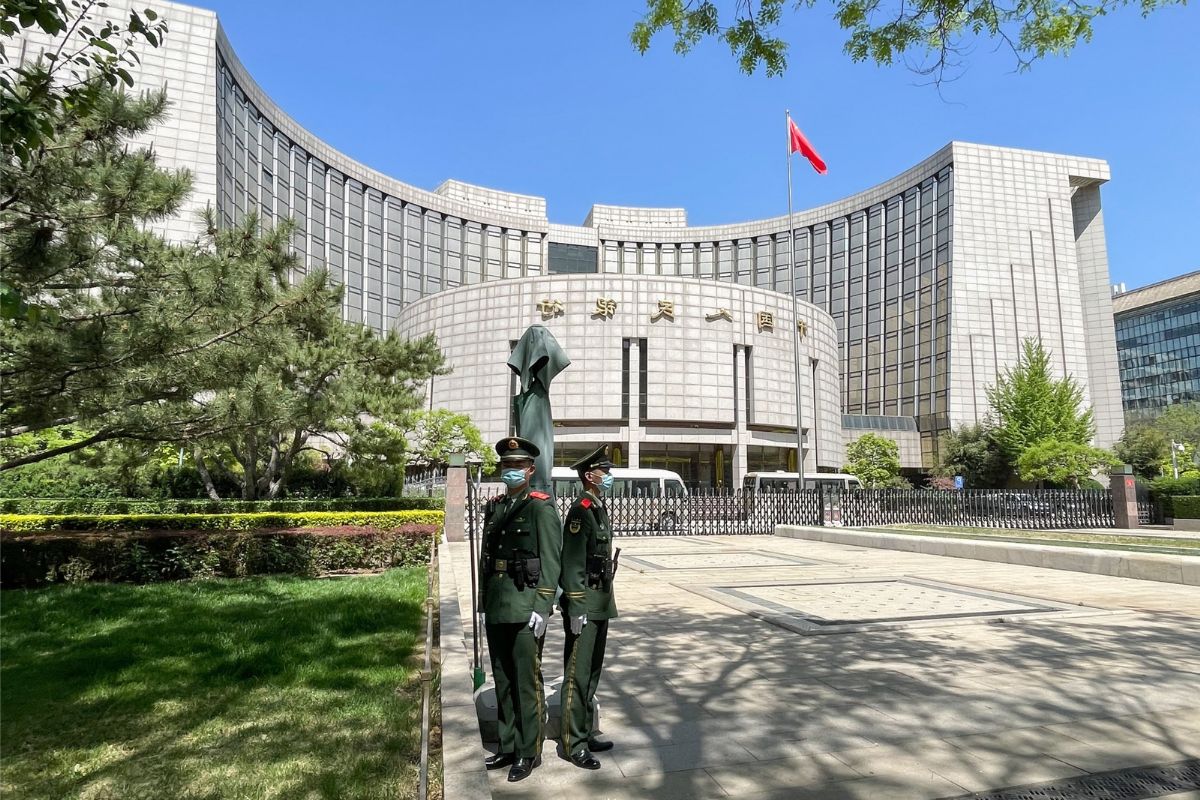Yuan’s Fate in Balance: Amidst the backdrop of China’s economic challenges, the country’s central bank, the People’s Bank of China (PBOC), has stood its ground, opting to keep benchmark lending rates unchanged.
This decision comes as no surprise, given the delicate balance the PBOC must maintain between stimulating economic growth and preventing excessive financial risks.
While the move may seem conservative, it reflects the PBOC’s cautious approach in the face of mounting uncertainties, particularly concerning the stability of the yuan.
Despite the unchanged loan prime rates (LPR), the question lingers: how will the PBOC address the broader liquidity issues as the Lunar New Year approaches?
Key Takeaways
– China’s decision to maintain benchmark lending rates reflects their commitment to stability and their cautious approach to monetary policy amid economic challenges and deflationary pressures.
– The People’s Bank of China (PBOC) is considering the stability of the yuan and exploring alternative measures such as quantitative easing tools instead of cutting rates, in order to avoid further depreciation of the currency.
– Despite economic realities, the loan prime rates (LPR) remain unchanged, indicating a cautious approach in the face of economic challenges. The one-year LPR influences most new and outstanding loans, while the five-year rate plays a crucial role in determining mortgage pricing.
– The yuan is facing downward pressure due to a strong U.S. dollar and concerns over the actions of the Federal Reserve, which could impact China’s export competitiveness and exacerbate trade tensions. Analysts anticipate rate cuts once the yuan shows signs of recovery, with a forecast of a 20 basis points reduction by the end of the second quarter.
Also Read: Decoding China’s Currency Strategy: How It Prevented a Yuan Sell-Off
China Maintains Benchmark Lending Rates Amid Economic Dynamics
Despite economic dynamics, China has chosen to maintain its benchmark lending rates, signaling a commitment to stability in the face of limited monetary easing options.
This decision by the People’s Bank of China (PBOC) reflects a cautious approach to monetary policy amid concerns over an uneven economic recovery and deflationary pressures impacting real borrowing costs.
By keeping lending rates unchanged, the PBOC aims to provide a sense of stability and predictability to the financial markets.
This move also indicates the central bank’s recognition of the limited room for further monetary easing, given the current economic challenges.
China’s decision to hold firm on benchmark lending rates demonstrates a strategic response to maintaining economic stability and managing the delicate balance between supporting growth and managing risks.
Yuan Stability Concerns Guide PBOC’s Decision-Making
China’s decision to maintain its benchmark lending rates reflects not only a commitment to stability in the face of limited monetary easing options but also a careful consideration of the concerns surrounding the stability of the yuan.
The People’s Bank of China (PBOC) is acutely aware of the potential risks associated with cutting rates, as it could further depreciate the yuan. To navigate this delicate situation, the PBOC is exploring alternative measures, such as quantitative easing tools.
One such tool is the pledged supplementary lending, which provides liquidity to banks and supports targeted sectors of the economy. By taking a cautious approach and considering the stability of the yuan, the PBOC aims to maintain stability in the financial system and avoid exacerbating depreciation pressures.
Loan Prime Rates (LPR) Unchanged Despite Economic Realities
The decision to keep the Loan Prime Rates (LPR) unchanged reflects the cautious approach of China’s central bank in the face of economic realities. Despite the challenges posed by the current economic climate, the one-year LPR remains at 3.45%, while the five-year LPR remains at 4.20%. This decision comes as no surprise, as a Reuters poll of 27 market watchers predicted the status quo for both rates. The one-year LPR holds significant influence over most new and outstanding loans in China, while the five-year rate plays a crucial role in determining mortgage pricing. By keeping the LPR unchanged, the central bank is aiming to maintain stability and support economic recovery amidst the ongoing challenges.
Yuan Faces Downward Pressure Despite Rate Decision
Amidst the rate decision by China’s central bank, the yuan is experiencing downward pressure influenced by external factors and cautious sentiment towards the Federal Reserve’s actions. The strong U.S. dollar and concerns over the timing of rate cuts by the Federal Reserve are contributing to the depreciation of the yuan.
This downward pressure is evident in the onshore yuan, which has depreciated by approximately 1.3% year-to-date, reaching its lowest level in two months. The depreciation of the yuan is a cause for concern as it could potentially impact China’s export competitiveness and exacerbate trade tensions.
Analysts are anticipating rate cuts once the yuan shows signs of recovery, with a forecast of a 20 basis points reduction by the end of the second quarter.
Anticipation of PBOC’s Liquidity Measures Ahead of Lunar New Year
In preparation for the upcoming Lunar New Year holidays, market observers are eagerly anticipating the implementation of liquidity measures by the People’s Bank of China (PBOC). Cash demand typically rises during this period, prompting the need for enhanced liquidity injections.
The PBOC is expected to employ methods such as reverse repos in open market operations, and there is even the possibility of a reduction in banks’ reserve requirement ratio (RRR). Analysts cited by the China Securities Journal have provided insights into the potential measures that the central bank might adopt.
These anticipated liquidity measures are crucial in ensuring sufficient funds are available to meet the increased demand during the Lunar New Year festivities. Market participants will be closely monitoring the PBOC’s actions in the coming weeks to gauge the impact on liquidity conditions.
Conclusion Of Yuan’s Fate in Balance
In conclusion, China’s central bank’s decision to hold firm on benchmark lending rates amidst economic challenges reflects their cautious approach towards managing the country’s economic dynamics.
Despite concerns over yuan stability, the PBOC has chosen to keep Loan Prime Rates unchanged, possibly to maintain stability and address downward pressure on the currency.
With the anticipation of liquidity measures ahead of the Lunar New Year, the central bank’s actions will play a crucial role in navigating the economic realities of China.




